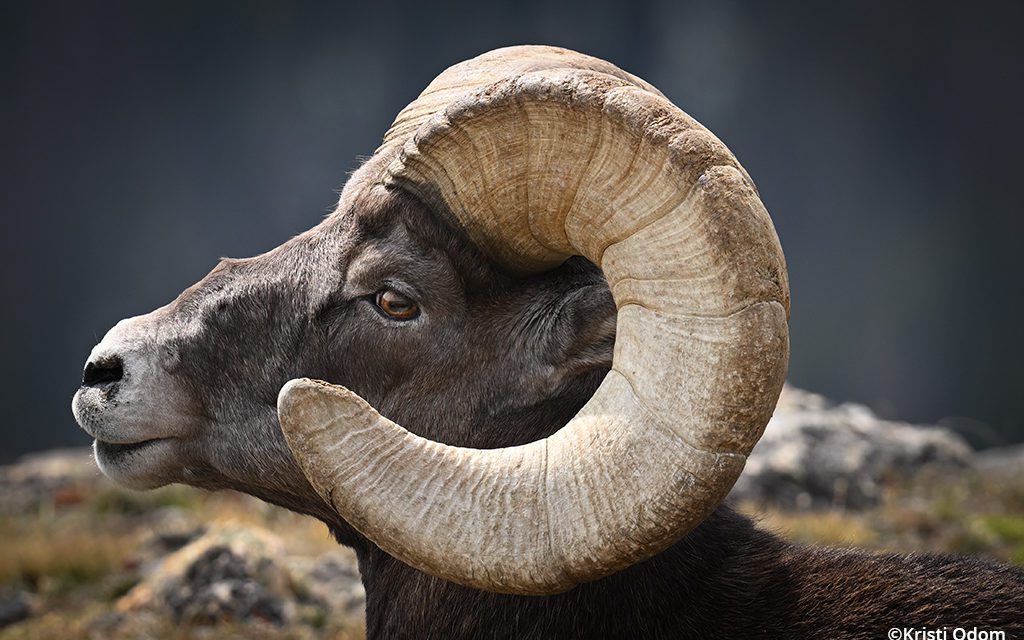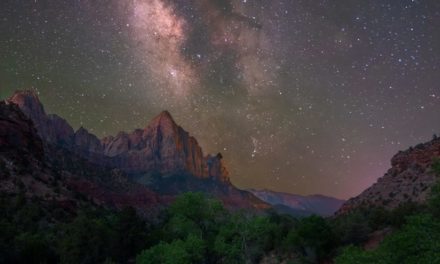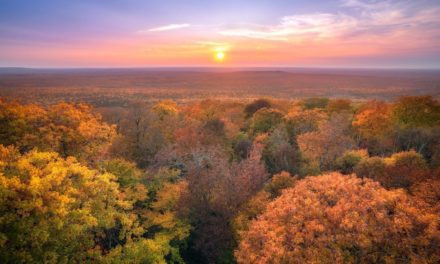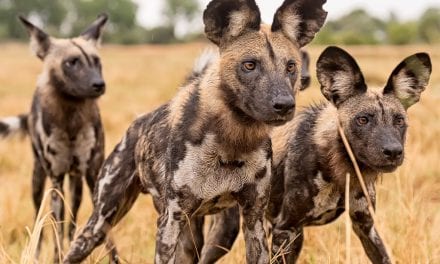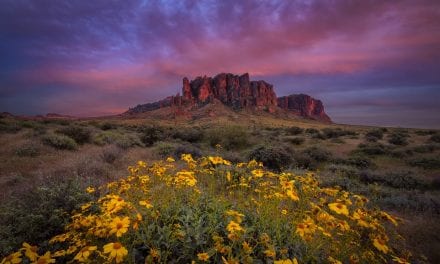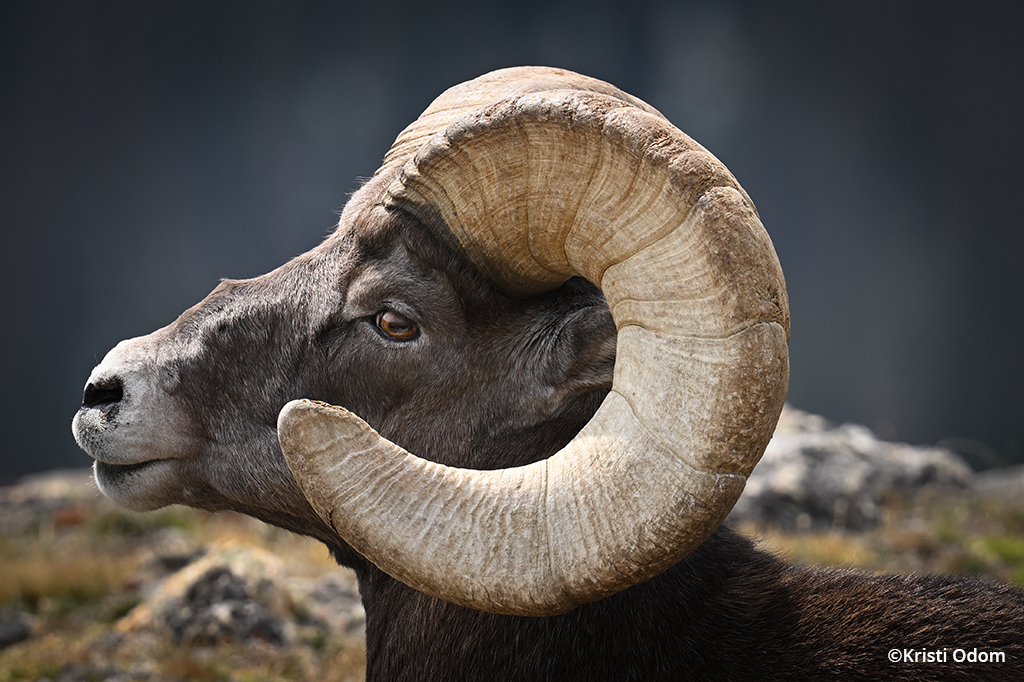
Bighorn sheep at Rocky Mountain National Park. To not disturb the wildlife, I often stayed pretty far away and used the Z 9’s DX crop mode to magnify my lens’s telephoto reach. Preproduction Nikon Z 9, AF-S NIKKOR 500mm f/5.6E PF ED VR via Mount Adapter FTZ II.
In the summer of 2021, I was rock climbing with my 10-year-old stepson, Miles, and my husband when I got a call from Nikon that put me in tears. For years, I have been promising Nikon, “If you give me a campaign, I will kill it.” I have always dreamed of having the newest technology in hand and creating content for a launch campaign around my photographic passions. This was the call to do just that, and it was for Nikon’s new flagship mirrorless camera, the Nikon Z 9.
Miles looked at me while tears poured down my face and asked with concern, “What’s wrong?” At the time, the level of confidentiality around this new camera was so high that I couldn’t share the news, even with my family. I replied, “These are happy tears that I can’t tell you about now, but I can’t wait to share with you in a few months. Let’s climb.”
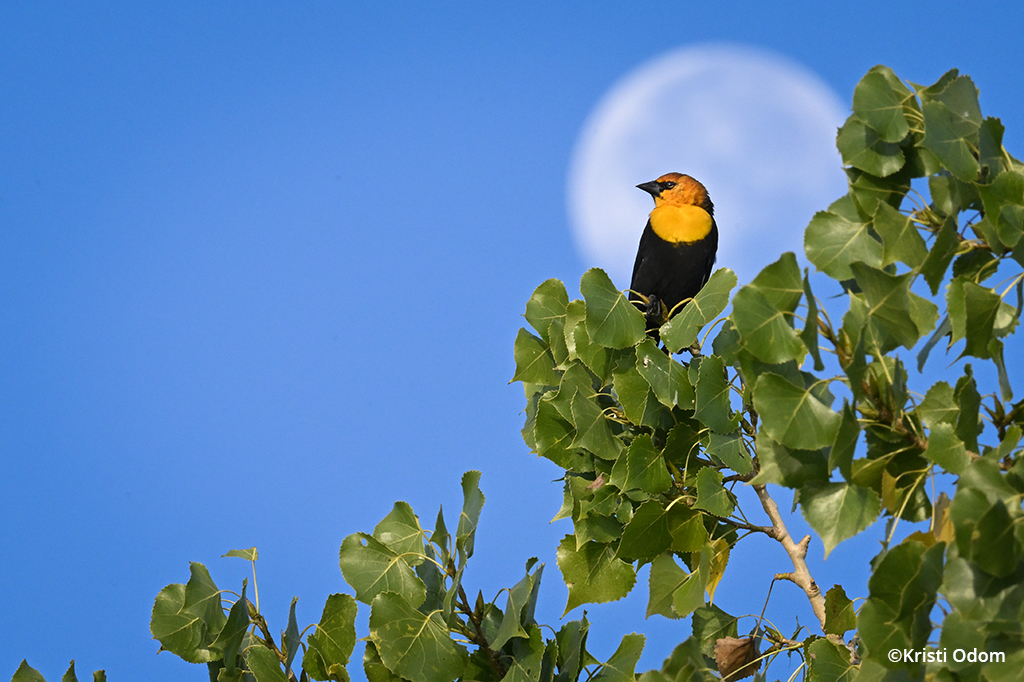
The setting moon nicely framed this Yellow-headed blackbird. Preproduction Nikon Z 9, AF-S NIKKOR 600mm f/4E FL ED VR via Mount Adapter FTZ II.
My assignment was a photo and video campaign that I would have five days to shoot. Though I’ve lived in Colorado for only a year, I have fallen in love with the wildlife in the mountains. I pitched to Nikon that I wanted to work with high-altitude wildlife, and hearing my enthusiasm for it, the company gave my idea the go-ahead. But my initial excitement slowly changed to extreme nervousness, as it was a short time frame for a wildlife shoot, we would be at altitude, plus it would be with a pre-production camera I didn’t know—it didn’t even have a manual yet. Nikon would be there watching me all along the way, and I had promised it would be epic. What if wildlife wasn’t there? What if my team couldn’t handle altitude? Most of our shoot was at 12,000 feet and above. How was I going to handle using a camera I hadn’t even touched? All these thoughts caused sleepless nights that led up to what would eventually be a wonderful and crazy adventure.
Michael Corrado, senior manager of Nikon Professional Services and Pro Relations, arrived in Colorado a couple of days before the shoot to help him acclimatize, and we headed to Rocky Mountain National Park to see how he would handle the altitude. As we drove up to the Alpine Visitor Center, I heard a familiar sound. Anyone who has heard an elk bugling knows that it is this strange, screechy call, but even in its off-pitch oddity, it is powerful and beyond beautiful. There was a male elk sitting close to the road. This was one of the wildlife encounters I was hoping to have, and it was right before our shoot technically started. Here I was with a new camera. I grabbed the Nikon Z 9 and took what would be the opening shot to my video campaign.
All the fear and nervousness went away when the camera’s animal eye tracking grabbed the elk’s eye and stayed with him as he raised his head to sing. I got down low and shot from behind to mix up the angle and get a composition emphasizing his horns. Since I was filming through tall grass and no eyes were in the shot, I used manual focus and the focus peaking feature to make sure everything I wanted to be in focus was actually in focus. Focus peaking overlays a color in the electronic viewfinder on the area in focus. In the Z 9, the focus peaking was stronger and more accurate than I had seen before in other cameras, which helped build my confidence that my focus was right while the elk sang again.

Still frames extracted from a 120 fps 4K video of an elk bugling. Since I was filming through tall grass, I used focus peaking to make sure the elk was sharp. Preproduction Nikon Z 9, AF-S NIKKOR 500mm f/5.6E PF ED VR via Mount Adapter FTZ II.
One of the keys to creating stronger wildlife images is the ability to connect with our subjects. My favorite images always seem to come when I allow myself to feel more in tune with what’s happening and think less about the camera. When I am distracted by my camera, my settings or my autofocus, it can cause a disconnect from my subject, and in effect, I end up with an emotionless image. When I was there with the elk, even with a new camera, the technology wasn’t an obstacle. The camera felt as if it was an extension of my eyes and heart. Looking through that camera and my 500mm with the Mount Adapter FTZ II, it was like I was right there next to the elk. The hair on my arms stood up with each bugle.
I took that footage home that night and checked it out on my 4K monitor. The details in the texture of the horn, the subtlety of color—things I didn’t even notice while in the field—were on my screen. All my fear and anxiety went away, and I was filled with confidence. I was so beyond excited for what the next five days would bring and what I could create with the Nikon Z 9.
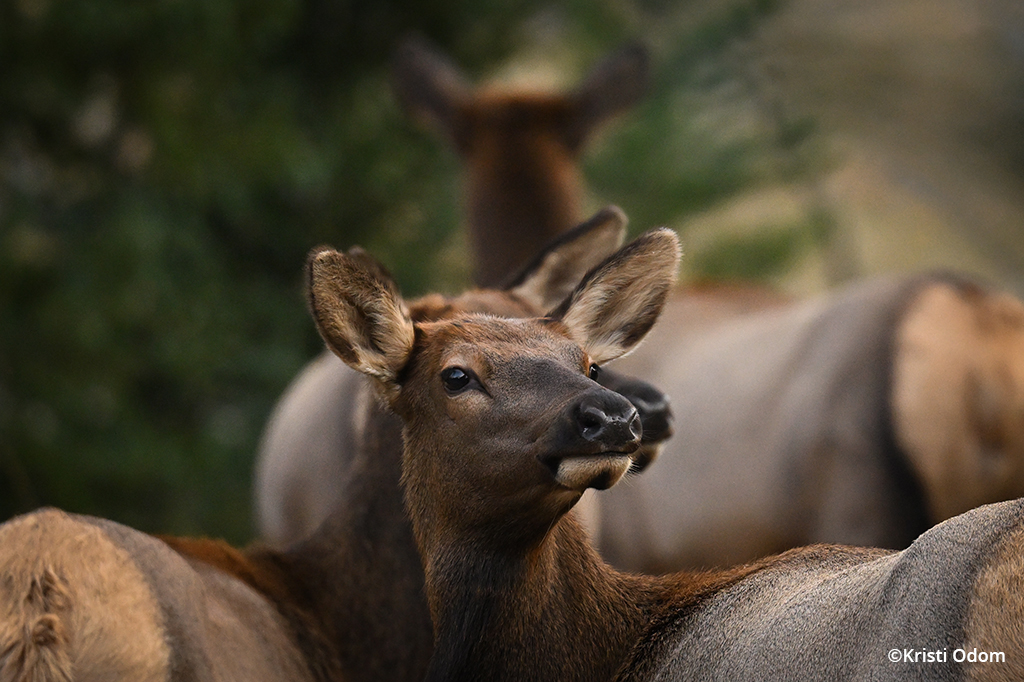
Elk at Rocky Mountain National Park. Preproduction Nikon Z 9, AF-S NIKKOR 500mm f/5.6E PF ED VR via Mount Adapter FTZ II.
As a wildlife and conservation photographer and filmmaker, I aim to connect people emotionally to wildlife, to show that animals have personalities, characters and feelings. Having the right tools is vital so that I can allow myself to be fully present while creating every photo. The confidence the Z 9 gave me in getting the shot allowed me to put my energy into composition, emotion and narrative.
Wildlife is often on the move, and to show animals in action, I need fast autofocus and sharp images. When I first moved to mirrorless, I treated the camera like I did my DSLR, setting up my autofocus the same as my DLSR, using single focus points and not embracing new AF technologies. Eventually, I started to try out the new focus modes and other technologies made possible by mirrorless camera design. Once I finally did start to trust the new technologies, I found a higher percentage of my shots to be in focus. With the Z 9 and its animal eye tracking and 3D tracking, I found pretty much everything to be in focus. The Z 9 and its new autofocus system just seem to melt into the background and let me connect with and capture the moment as I feel it.
My first thought when I got this assignment was of a little mammal that has captured my heart over the last year. I had just finished an article for National Geographic on pikas, a potato-sized mammal that is a relative of the rabbit, with mouse ears. I had recently spent countless hours in the mountains watching them build hay piles out of flowers and plants. They are quick and, in some ways, even more challenging to photograph than birds. With their rabbit-like back legs, they can run at up to 15 miles an hour, in and out of rock piles at ease. To check the speed of the Nikon Z 9, I wanted a real challenge—to see how well it could track a pika and to capture video of this amazing animal.
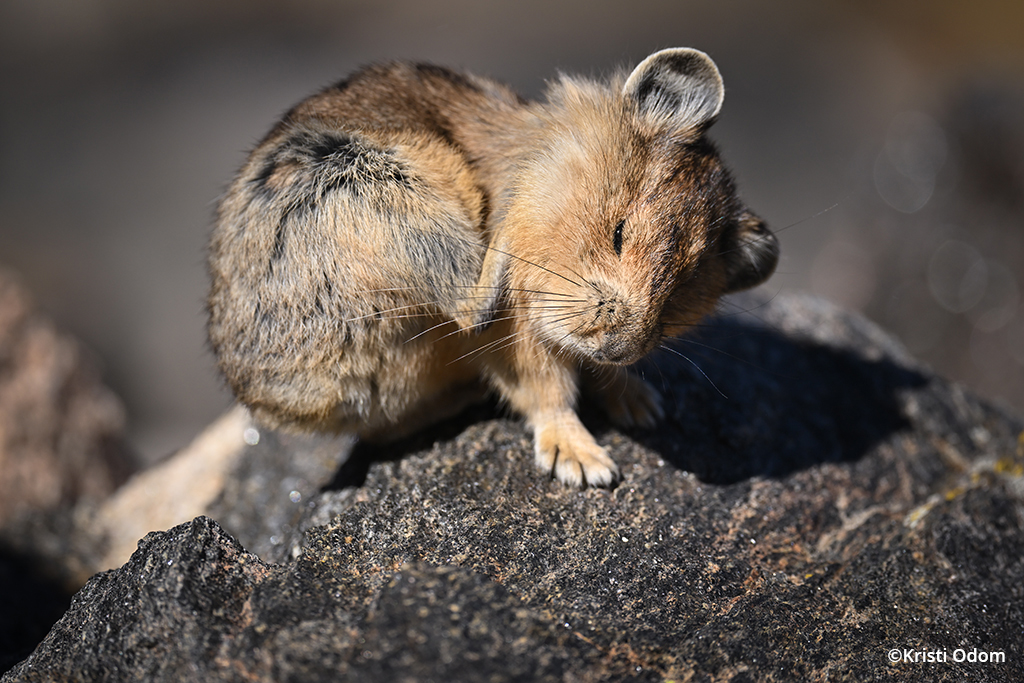
American pika, Loveland Pass, Colorado. For this shot, I had the Z 9 set for continuous shooting at 20 fps. During its scratch that took a little more than 2 seconds, I was able to fire off 52 frames, which helped me find the one with its eye in a perfect squint. Preproduction Nikon Z 9, AF-S NIKKOR 500mm f/5.6E PF ED VR via Mount Adapter FTZ II.
We spent two of our days in rock piles at 12,000 feet, watching pikas run and collect hay. I was so impressed by the Z 9’s autofocus and how it was able to lock and track the eye of the pika. I tried the camera’s 20 fps continuous burst shooting and was able to get the moment in which a pika partially closed its eyes during a quick scratch. The scratch lasted just over 2 seconds, and I was able to get 52 frames fired off, all tack-sharp.
Not only was the photography impressive in the Z 9, the video also exceeded my expectations. Photography allows us to grab fractions of seconds, while slow-motion video helps alter time so we can see things that we can’t see with our eyes. Patterns created by the movement of an insect’s wings while they are in flight or the wind picking up the eyelashes on bighorn sheep are examples of why I love slow-motion video. Having the ability to shoot video of animals at 120 fps in 4K resolution showed me more detail than I have ever seen. Even while editing, I was exploring, discovering and connecting deeply with my subjects. While I don’t edit for 8K output, being able to shoot in 8K gave me some serious cropping ability for 4K footage.
When shooting video, I am a minimalist. I rarely use tripods and instead find ways to rest the camera on my knees or a rock. I like being flexible and quick and super low impact on the terrain. The combination of the Nikon Z 9’s in-camera stabilization and vibration reduction systems in the lenses allowed me to record nearly every scene of the campaign handheld.
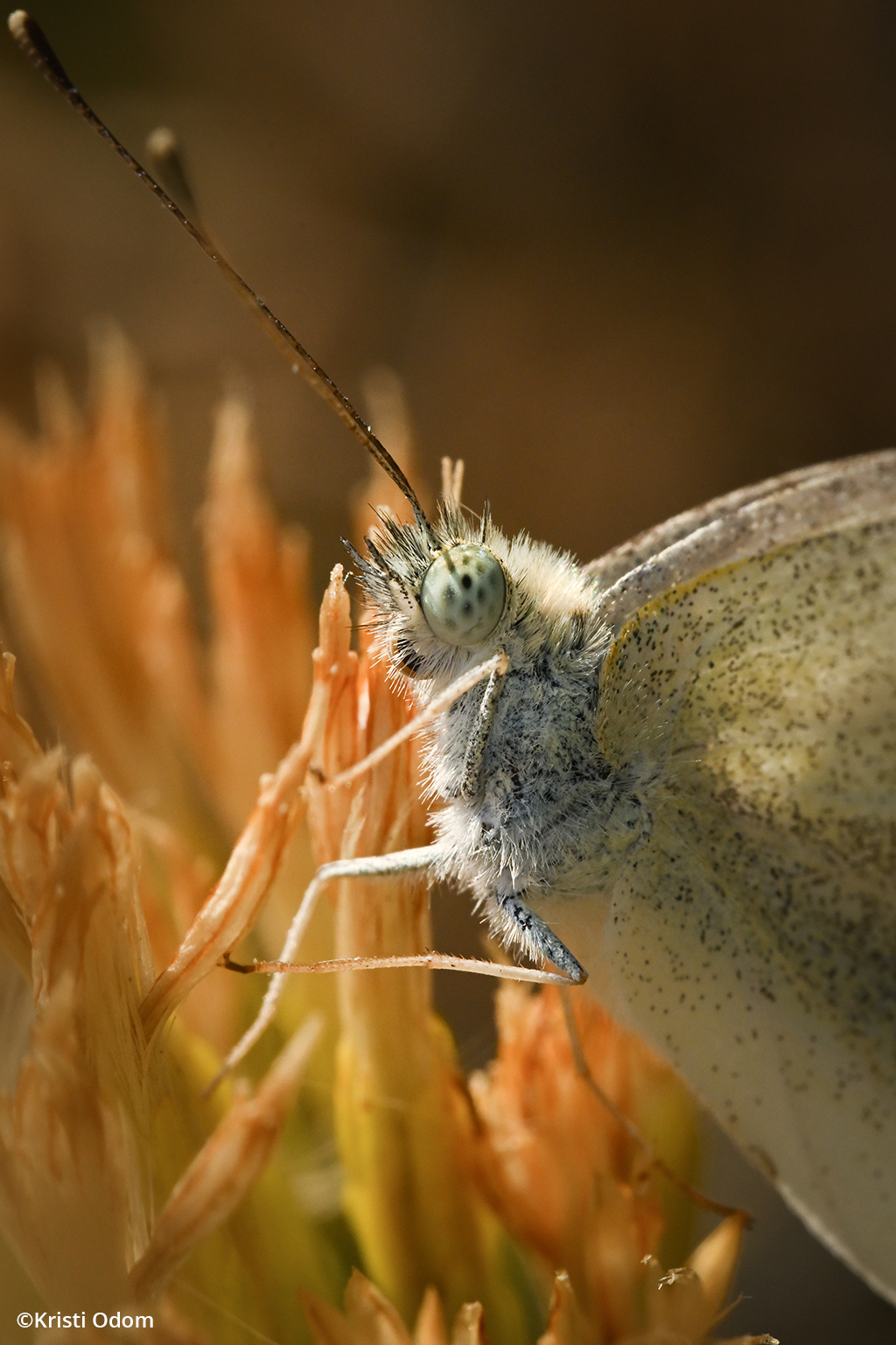
A cabbage white butterfly’s details are beautifully revealed in this macro shot. Preproduction Nikon Z 9, NIKKOR Z MC 105mm f/2.8 VR S.
I have been happily surprised by how easy it is to make high-quality video with a minimal setup using the latest cameras. Before, I was overwhelmed with gear, feeling like I needed jibs, steady cams, focusing rings and such, which for me makes it very hard to connect with my subjects. For this campaign, my equipment was simply two Z 9 cameras, a few different lenses and an occasional tripod.
We ended up getting everything we needed on the first four days of our five-day schedule. The team took off, and Corrado and I went for an easy last day, not in the mountains but at a local lake by my home. I found a resting butterfly and was able to have fun with the Z 9 and the NIKKOR Z MC 105mm f/2.8 VR S macro lens, revealing the pattern in the butterfly’s eye.
While we had so much wildlife in the mountains, from elk, bighorn sheep, pikas, marmots and even a weasel, we barely saw birds. I was a bit surprised, but one of the many things I love about wildlife photography is that it is totally unpredictable. I really wanted to try out the camera’s autofocus system on birds in flight, so I was excited to find many there at the lake. One pelican flew in from the distance, then started heading toward me before turning across the lake from left to right and then off into the distance to land. I had the camera set on 3D tracking, and it maintained focus on the pelican while it moved toward me and throughout the turns of its flight.
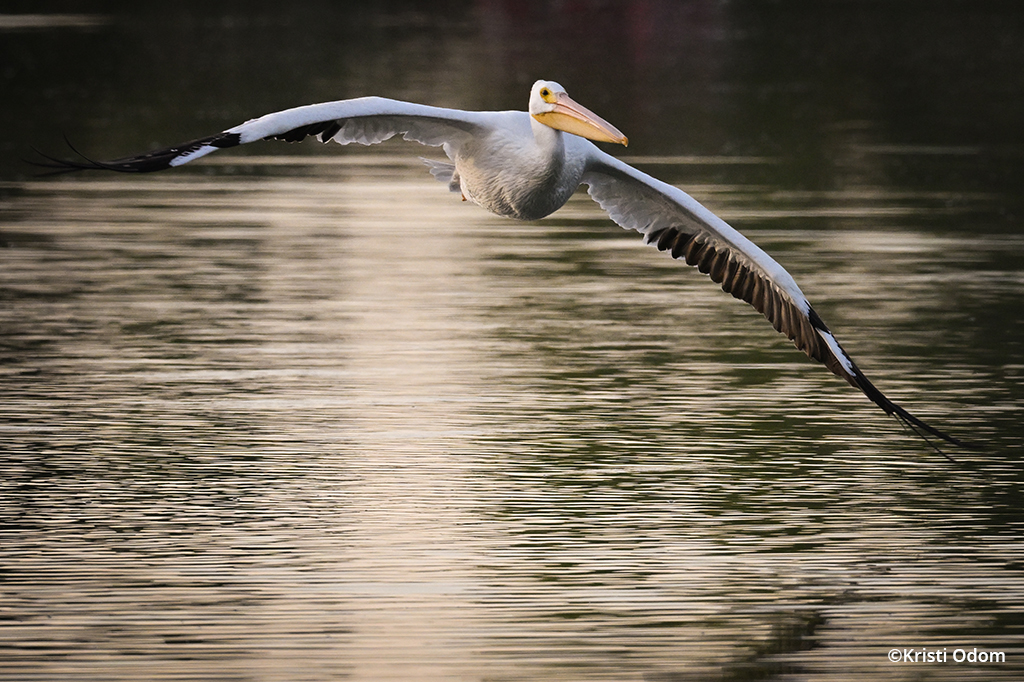
Pelican in flight. I used the Z 9’s 3D tracking to follow the pelican in flight as it circled the water before landing. Preproduction Nikon Z 9, AF-S NIKKOR 600mm f/4E FL ED VR via Mount Adapter FTZ II.
The hardest part of the campaign was when it was over, and the Z 9 was taken out of my hands and sent off to Joe McNally, where he was planning to mount it on a high-speed vehicle in the desert and test the camera in a totally different way. I miss it and can’t wait to get my hands on one again. I know the first thing I am going to do is to head high into the mountains in search of weasels.
It’s exciting what technology can do for our art when it is so advanced that it disappears, and the camera becomes an extension of who we are as creators. I can’t wait to get my hands back on the Nikon Z 9 again.
See more of Kristi Odom’s work at kristiodomfineart.com.
The post Nikon Z 9: A Wild Opportunity appeared first on Outdoor Photographer.

